
Lake Oroville is a reservoir formed by the Oroville Dam impounding the Feather River, located in Butte County, northern California. The lake is situated 5 miles (8 km) northeast of the city of Oroville, within the Lake Oroville State Recreation Area, in the western foothills of the Sierra Nevada. Known as the second-largest reservoir in California, Lake Oroville is treated as a keystone facility within the California State Water Project by storing water, providing flood control, recreation, freshwater releases to assist in controlling the salinity intrusion into the Sacramento-San Joaquin Delta and protecting fish and wildlife.
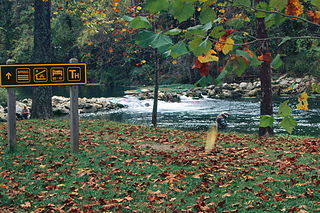
Bennett Spring State Park is a public recreation area located in Bennett Springs, Missouri, twelve miles (19 km) west of Lebanon on Highway 64 in Dallas and Laclede counties. It is centered on the spring that flows into the Niangua River and gives the park its name. The spring averages 100 million gallons of daily flow. The park offers fly fishing, camping, canoeing, hiking, and other activities.
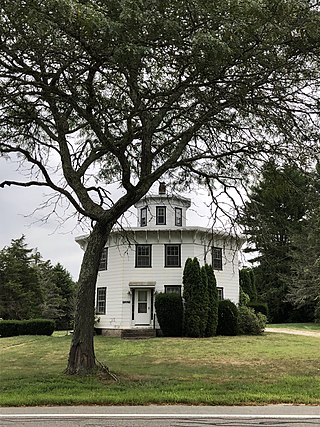
Carolina is a village that straddles the border of the towns of Charlestown and Richmond on the Pawcatuck River in Washington County, Rhode Island. Rhode Island Route 112 passes through the village. Carolina is identified as a census-designated place, with a population of 970 at the 2010 census.

The Lake Fish Hatchery Historic District comprises nine buildings built between 1930 and 1932 by the U.S. Fish and Wildlife Service in the National Park Service Rustic style. The buildings exhibit a consistency of style and construction, with exposed gable trusses and oversized paired logs at the corners, all with brown paint. The district is located on the shore of Yellowstone lake near the Lake Hotel The hatchery was established to provide Yellowstone cutthroat trout eggs for state and federal hatcheries outside Yellowstone.

The Old McKenzie Fish Hatchery was used to raise trout and salmon for release into the McKenzie River in western Oregon in the United States. It is located near the unincorporated community of Vida in Lane County. The hatchery is closed, however, the historic site is now a county park. It is also listed on the National Register of Historic Places.

The Mount Whitney Fish Hatchery, located in Independence, California, in the United States, is an historic fish hatchery that has played an important role in the preservation of the golden trout, California's state fish.
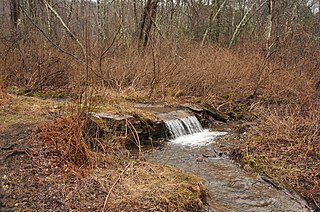
Sharpe's Trout Hatchery Site is a 1-acre (0.40 ha) site of a former fish hatchery in Vernon, Connecticut. The hatchery was established in 1871 by Christian Sharps, and was abandoned after his death in 1874. The site was listed on the National Register of Historic Places in 1997. Its surviving remnants are located in Vernon's Valley Falls Park, about one mile south of the mill pond.

The Prairie Creek Fish Hatchery near Orick, Humboldt County, California was one of the first small local fish hatcheries developed to improve the area's sport and commercial fishing, and is one of only three remaining hatcheries built in California from 1871 to 1946.
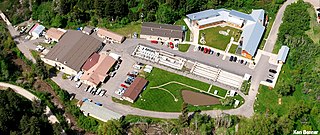
The Bozeman National Fish Hatchery, now known as Bozeman Fish Technology Center, is located about 4 miles (6.4 km) northeast of Bozeman, Montana, at the entrance to Bridger Canyon. There is also a National Fish Health Center on the southwest side of Bozeman, near Montana State University, about 7 miles (11 km) away from the Fish Technology Center. Fish Technology Centers work with a wide variety of public and private partners to improve and conserve aquatic resources. Both the Fish Technology Center and the Fish Health Center are part of the National Fish Hatchery System, operated by the United States Fish and Wildlife Service. There are seven Fish Technology Centers and nine Fish Health Centers in the United States. The Bozeman hatchery is the fourth oldest National Fish Hatchery. The hatchery was named to the National Register of Historic Places on January 6, 1983.

The Delafield Fish Hatchery was established in 1906 in Delafield, Wisconsin as part of a state system to stock game fish fry into Wisconsin lakes and streams. The hatchery was added to the National Register of Historic Places in 1981.
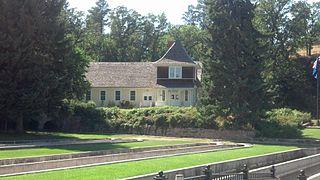
The D.C. Booth Historic National Fish Hatchery and Archives, also known as the Spearfish Fisheries Center or Spearfish Fisheries Complex and formerly known as the Spearfish National Fish Hatchery, is one of 70 fish hatcheries that were opened by the U.S. Fish and Wildlife Service as part of the National Fish Hatchery System. The hatchery was established near Spearfish, South Dakota in 1896, with the purpose of introducing and establishing populations of trout in the Black Hills of South Dakota and Wyoming. It is one of the oldest fish hatcheries in the United States and is the second-oldest in the American West. The hatchery spawns and releases about 20,000 to 30,000 rainbow trout each year. The hatchery doubles as a fisheries archive with the purpose of preserving records and early historical artifacts. It is listed on the National Register of Historic Places.

The Furnace Grove Historic District encompasses the remains of a historic 19th-century iron processing facility near Bennington, Vermont. Located on the north side of Vermont Route 9 east of the town center, its production peaked in the 1830s, and was afterward converted into a gentleman's farm. Surviving elements of its past include the remains of iron smelting furnaces, housing, and agricultural outbuildings. The district was listed on the National Register of Historic Places in 1997.
The Drayton Plains State Fish Hatchery was the second fish hatchery opened by the State of Michigan Department of Natural Resources. It was established in 1903 and originally named Drayton Plains Station. The name was officially changed to Drayton Plains State Fish Hatchery in 1934.

The Salisbury Fish Hatchery is a state-operated fish hatchery on Vermont Route 53 in Salisbury, Vermont. Established in 1931, it produces broodstock trout for distribution to the other hatcheries in the state. Its facilities were listed on the National Register of Historic Places in 1994. The facility may be toured by arrangement, but there is no visitors center.

The Guttenberg National Fish Hatchery and Aquarium Historic District is a nationally recognized historic district located in Guttenberg, Iowa, United States. It was listed on the National Register of Historic Places in 1991. At the time of its nomination the district consisted of four resources, all of which are contributing buildings. This district also contributes to the Front Street Historic District. The U.S. Fish and Wildlife Service had a long history of involvement with wildlife conservation in Iowa, especially fisheries. They established fish rescue program along the Mississippi River in 1903 and a research station at Fairport in 1910. The development of the lock and dam system in the 1930s brought the fish rescue operations to an end because they eliminated of the backwaters that trapped them. The fish hatchery was developed at that time.

The Roxbury Fish Hatchery, established in 1891, is the oldest state-run fish hatchery in Vermont. It is located on Vermont Route 12A in Roxbury, adjacent to Flint Brook, a tributary of the White River. Its early buildings and landscape were listed on the National Register of Historic Places in 1994. It is generally open to visitors, but has been closed to visitation since its facilities were damaged by Hurricane Irene.

The St. Johnsbury Federal Fish Culture Station, also known as the St. Johnsbury Federal Fish Hatchery, was a United States government-funded fish hatchery on Emerson Falls Road in St. Johnsbury, Vermont. The hatchery operated from 1895 to 1960, producing fish stock for headwater tributaries of the Connecticut River and St. Lawrence River in northern New England and New York. The surviving facilities of the hatchery, now adaptively reused for other purposes and in private ownership, were listed on the National Register of Historic Places in 2005.
Lost Man Creek Dam was a gravity dam used by the Prairie Creek Fish Hatchery in Humboldt County, California from 1936 to 1955.
The Bellvue-Watson Fish Hatchery is a Colorado Parks and Wildlife cold water fish production facility located near Cache la Poudre River and Watson Lake State Wildlife Area in Larimer County, Colorado. Hatchery staff works to support the raising of approximately 1.5 million sub-catchable trout annually. The Watson Lake Rearing Unit, a division within the hatchery, is responsible for rearing approximately 300,000 catchable trout each year. The hatchery stocks fishing sports in Wellington, Fort Collins, Loveland, Longmont and Jumbo Reservoir near Julesburg and Hale ponds.

The Maricao Fish Hatchery, also known as the Insular Fish Hatchery, is a historic 3.32 acre fish hatchery located along the Río Rosario in the Maricao Afuera district (barrio) of the Puerto Rican municipality of Maricao, within the Maricao State Forest jurisdiction. The hatchery is located at approximately 1,500 feet above sea level, 1.2 kilometers from downtown Maricao.




















